
Create astonishing web sites and pages.

How to Describe Music in Writing
It’s easy to describe music in writing. However, this isn’t always the case, as there is much to learn before writing a creative paper on a musical composition of choice. The task is more difficult considering the special terminologies one has to master and the technicalities involved when formatting specific music papers. Describing music in writing can be difficult if you aren’t a pro. Therefore, you need assistance from more experienced writers or professionals in the industry to ensure your paper meets the right quality standards. In addition, there are numerous points to consider when implementing the advice you get from your seniors as you work toward having a well-developed paper. In this post, we’ll explore some of the things to consider when describing musical performances and the techniques that can be useful in the process.
When describing your favorite composition in creative writing, there are several things to consider to create an effective and engaging article. Here are some tips:
- Identify the mood and emotion. Start by identifying the overall mood and emotion of the piece. Is it happy and upbeat? Melancholy and introspective? Somber and reflective? Identifying the mood and emotion of the performance will set the tone for your description and help your readers understand what the music is conveying. In addition, you will identify the right language to use when writing your creative paper, communicating in a way that visually represents the musical piece under study.
- Pay attention to the instruments and vocals. Consider the instruments and vocals used in the composition. How do they interact with each other to create the overall sound? What specific sounds or techniques stand out to you? Listening to these features will help you provide specific details that bring your description to life. For instance, you can identify whether a given type of composition is classical, rock, or jazz. Therefore, identifying the specific features will ensure your descriptive essay has the right appeal.
- Think about the structure. Consider the structure of the composition. Is it a simple verse-chorus-verse format or something more complex? How does the structure contribute to the overall mood and emotion of the piece? Creative writing in music calls for an understanding of the specific musical genre. You must understand the structure to describe the music in writing and communicate the information to your readers. Therefore, you must take some time to listen to the music and think through it to write a catchy essay.
- Use sensory language. Use sensory language to describe the music. What does it sound like? Does it evoke any particular images or memories? What physical sensations does it create? Considering these features when writing descriptive papers will help your readers feel like they are experiencing the music alongside you. Further, the features will help you get the contentment of writing a quality essay that gives your readers an actual representation of information about the selected music even when they have not listened to it.
- Consider the context. When writing a descriptive music essay, think about the context in which it was created. Was it written during a particular period or in response to a particular event? What cultural or historical influences are apparent in the music? The context helps you identify whether the music is ambient to the surrounding. It’s one of the basic features of descriptive writing that maps the musical performance to its setting, enabling the audience to identify with the composition and relate it to selected societal events.
As a student, you must learn how to describe music in writing. However, mastering all the technical terminologies specific to music might take a long time. In addition, there might be limited time to learn and practice the skills before you write a creative music essay for your next class assignment. Therefore, contacting a professional essay writing service, such as CustomWritings , might be important to help you with creative music papers. The service has professional writers who understand music and can help write original descriptions for the music of your choice. One of the greatest benefits of using the service is that you can consult the experts for free and let them complete the descriptive music assignment once you feel they have addressed all your concerns. Therefore, if you need assistance with your creative music assignment, feel free to place an order with the website and have the experts assist while you focus on other things.
Top ways to describe music in creative writing
Describing music in creative writing can be challenging. However, you can create a vivid and immersive experience for your readers if you take the right approach. Here are the top five ways to describe music in creative writing:
Use sensory language
One of the most effective ways to describe music is to use language that appeals to the reader’s senses. For example, you can describe the sound of the music by using words like “crisp,” “mellow,” “energetic,” or “loud.” Using sensory language in descriptive writing helps the reader to immerse themselves in the essay to understand the music from an informed perspective.
Explore the emotional impact
Music is often used to convey mood and emotion. As a writer, you can use this to your advantage. When describing music, try to identify the mood and emotion it conveys. Use descriptive language to paint a picture of that emotion in a way that is understandable to the reader without making it ambiguous. Focus on how the music makes you feel and relate that to how you’d want your readers to view the music. The multifaceted view will help you develop catchy and descriptive essays that will satisfy your audience with the narration.
Use metaphors and analogies
Metaphors and analogies can be effective tools for describing music in creative writing. For example, you might describe a piece of music as “a wave crashing against the shore” or “a bird taking flight.” Metaphors and analogies can help you convey the essence of the music in a relatable and memorable way. They can help you develop thoughtful and descriptive papers for presentation in academic and non-academic forums.
Consider the context
When describing music in creative writing, it’s important to consider the context in which it was created. What was happening in the world at the time? Was the music created to respond to a particular event or cultural phenomenon? By considering the context, you can give the reader a deeper understanding of the significance of the music and how it fits into the larger cultural landscape.
Describe the tempo and rhythm
When writing a descriptive essay in music, focus on the tempo and rhythm. These features carry many messages and will help you craft your essay most satisfyingly. For instance, composers can have jazz, rock, and classical music, all of which use different tempos and rhythms. Therefore, listening to specific musical pieces will help you learn about and describe them appropriately.
Take a step to change your approach to descriptive writing in music
Writing, like any other task, requires constant practice. It demands an understanding of techniques that improve productivity. This is the same for creative writing in music , as it calls for intensive training and mastery of different writing tips. We have presented some of the most important elements in this post, letting you pick those which can be helpful as you chart a path in descriptive writing.
Like what you're reading? Subscribe to our top stories.
We are continuously putting out relevant content. If you have any questions or suggestions, please contact us!
Follow us on Twitter , Facebook , Instagram , YouTube
Hanna Wolfe Follow
I create advanced website builders made exclusively for web developers.
Ready to dominate the music industry?
Get started now.

Free Course
Ever wondered what goes on behind the scenes of a professional story edit (structural edit of fiction)? In this course, we're pulling back the curtain to reveal the secrets of the trade.
Free now ($39 Value)
Join the Fictionary Community to get FREE access to the course and sign up for our mailing list.
- Comments This field is for validation purposes and should be left unchanged.
Write an Unforgettable Novel
Outline, write, and edit your novel with Fictionary software and our editor-led classes

Blogs / Writing Tips / 100+ Words to Describe Music (+ Examples)
Write a Novel Readers Love
100+ words to describe music (+ examples).
Music plays an important role in many people’s lives, so the topic of how to describe music in writing is an important one .
Some songs invoke memories:
- A first dance,
- An important summer in childhood,
- A song a loved one sang while they worked.
Music can be equally important in writing by adding a sensory level to the story for both the characters and the reader.
The challenge a writer faces when considering how to describe music in writing is the same challenge a writer faces in describing any sensory experience that must connect to a wide readership. Every reader will:
- Hear in their own way.
For this reason, we often see the best musical descriptions used to reveal character more than to reveal the music itself.
How to Describe Music in Writing
Music, much like other sensory elements in a story, will be most effective if its presence serves multiple purposes to the scene or chapter. Consider the following ways music can add layers to the writing:
- Creates tone in a scene
- Triggers a flashback for a character
- Reveals a character’s mood
- Foreshadows
- Increases tension
Writers using music to establish one or more of the above examples will notice a deeper connection music has in the story and are fantastic ways to think about how to describe music in writing .
Words to Describe Music
For writers who are still wrestling with the subtleties of how to describe music in writing, traditional terminology may be more effective. So here are some adjectives and unique words you can use to describe music. We have also added a list of words that can specifically describe a melody if you require more technical terminology.
Adjectives to Describe Music
- Bittersweet
- Melancholic
- Mesmerizing
- Sentimental
Unique Words for Music
- Arpeggiated
- Decrescendo
- Syncopation
Words to Describe Melody
- Arrangement
- Progression
Examples of Ways to Describe Music in Writing
And now lets move on to some examples of authors who have successfully used a music in writing.
How to describe music in writing, Example 1: A Visit from the Good Squad by Jennifer Egan
In A Visit from the Good Squad , Jennifer Egan unravels a series of narratives surrounding an aging rock star who becomes a record executive. Aside from winning a Pulitzer Prize in 2011 for her work, she shows skill in expressing music in her writing.
“And then I notice the music flooding out of every part of the apartment at once – the couch, the walls, even the floor – and I know Bennie’s alone in Lou’s studio, pouring music around us.”
From this passage, the reader gets the impression of the pressure the music has, expanding the room and enveloping the characters.
The music is not heard, so much as it is felt, and the description of feeling is one any reader can understand as all encompassing. In this example, we see the type of music is not important, but rather the way it becomes an entity taking over the space.
How to describe music in writing, Example 2: Bel Canto by Ann Patchett
Bel Canto by Ann Patchett won the Orange Award and the PEN/Faulkner Award in 2001 and tells the story of a Japanese businessman and opera fan who encounters a hostile takeover at his own birthday celebration.
Patchett shows the importance of music for this character in the following passage.
“It was early in the second act, when Rigoletto and Gilda sang together, their voices twining, leaping, that he reached out for his father’s hand. He had no idea what they were saying, nor did he know that they played the parts of father and daughter, he only knew that he needed to hold onto something.”
Much like the above example from Egan, Patchett does not necessarily describe the music itself, but the impact it has on the character. The vulnerability felt by
this character is one every reader can relate to, whether they are a devoted fan of opera or a reader with no experience of the art form.
How to describe music in writing, Example 3: Never Let Me Go by Kazuo Ishiguro
Kazuo Ishiguro uses a song from his writing to title his novel in Never Let Me Go , which was shortlisted for the Man Booker Award in 2005. In his dystopian science fiction novel, the narrator Kathy connects to a song she finds in her childhood.
“It’s slow and late night and American, and there’s a bit that keeps coming round when Judy sings: ‘Never let me go…Oh baby, baby… Never let me go…’
The music is described in a more obscure way here, slow, late night, American .
Unlike the above examples, these descriptions are not only more specific to the music itself, but they also leave room for interpretation by the reader.
And yet, a reader can sense the music, feel it, and know how it is affecting this character as she navigates a difficult self-realization in this scene. Additionally, this song reveals a deeper meaning to both the character and the reader as she comes to understand what is at stake for her throughout the novel, making the song title a brilliant title for the novel itself.
Other writers use music to direct the reader and show structure to the writing.
Robert Galbraith, (pseudonym for J.K. Rowling), uses lyrics from the American rock band, Blue Oyster Cult, to begin every chapter of her novel, Career of Evil (2015). The lyrics are carefully chosen and offer the reader insight into tension and conflict in the coming chapter.
Emily St. John Mandel shows the importance of art and music in a society collapsed after a pandemic in her novel, Station Eleven , a winner of the Arthur C. Clarke Award and a finalist for both the National Book Award and the PEN/ Faulkner Award in 2014.
Mandel never overtly describes the music in her Traveling Symphony, though she names characters by the instruments they play.
The first flute is “irritated” and the second horn “petty”.
She attributes character traits to the instruments they play, revealing the identifying nature of the music for these characters surviving an end of world scenario.
For these writers, music is a means to reveal character and story.
How to Describe a Song Conclusion
Writers will find music can deepen their story by offering sensory details to the writing while also adding layers to the character and plot. Much like those memories music evokes for many of us, music can be the fabric of life for the characters we write.
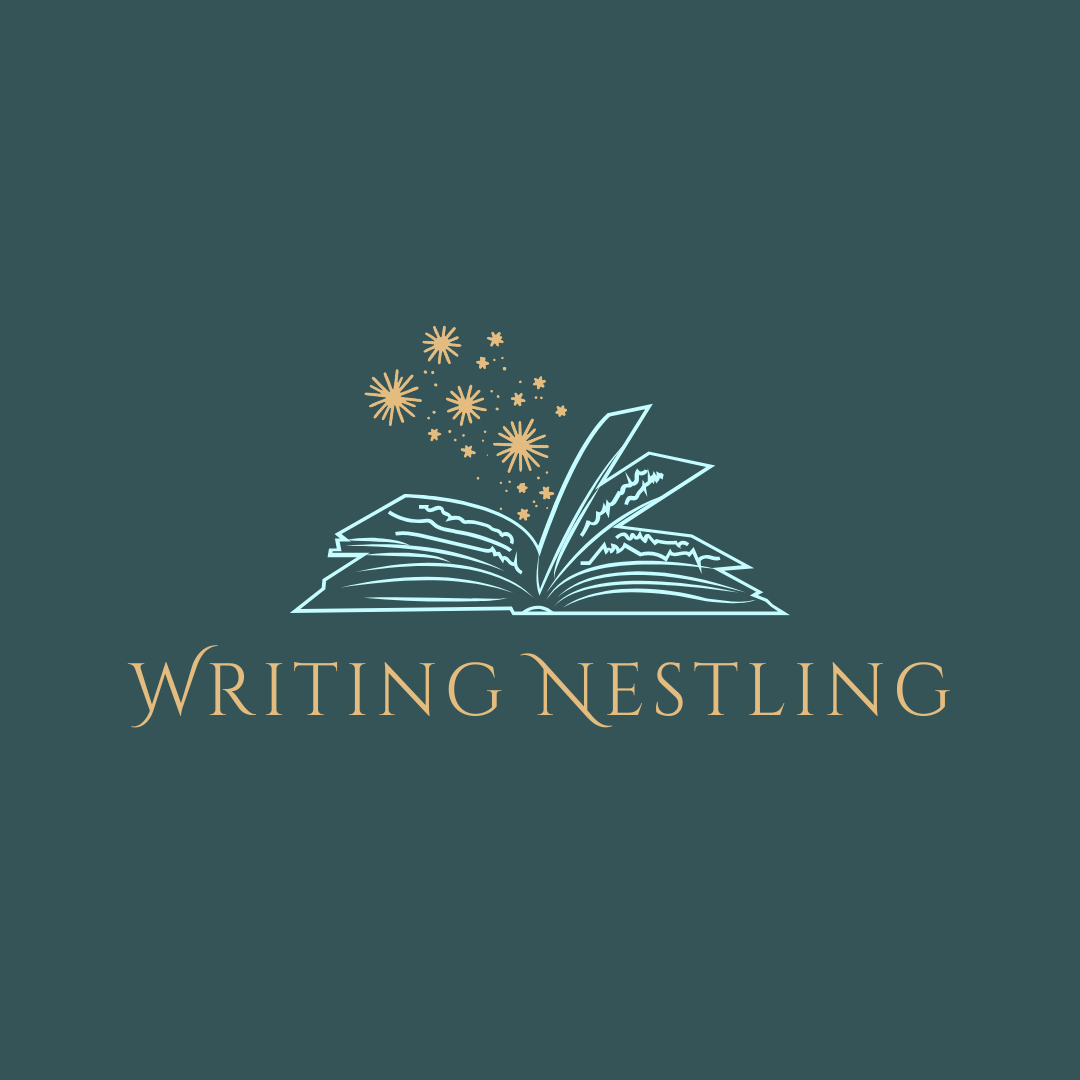
Writing Nestling
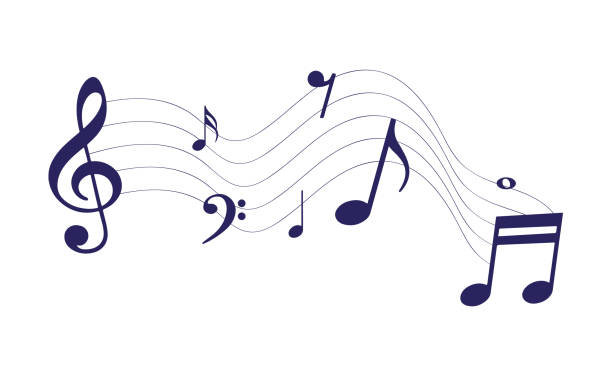
How To Describe Music In Writing (12 Tips For Beginners)
Table of Contents
How To Describe Music In Writing
How To Describe Music In Writing: Describing music in writing is an art that holds the power to transcend the auditory experience and paint vibrant, evocative landscapes with words.
Just as music itself is a universal language that transcends borders and cultures, the ability to convey its beauty, emotion, and intricacies through the written word is a skill that resonates with readers and listeners alike.
From the melodic storytelling of a symphony to the raw energy of a rock ballad, understanding how to harness the written word to capture the essence of music is an endeavor that bridges the realms of creativity and expression.
In the following exploration, we will delve into the techniques, elements, and intricacies of this art, illuminating the path to translating the boundless world of sound into a language that can be felt, understood, and cherished through the written word.
Describing music in writing involves conveying the auditory experience through words. Here’s a step-by-step process on How To Describe Music In Writing:
Listen Actively
Pay close attention to the music you want to describe. Listen to it attentively, and if possible, multiple times to understand its nuances.
Analyze the Genre
Identify the genre or style of music. Is it classical, rock, jazz, pop, hip-hop, or something else? Understanding the genre provides a foundation for your description.
Identify Key Elements
Melody: Describe the main tune or themes in the music. Harmony: Discuss how different musical elements work together to create a sense of harmony or discord. Rhythm: Mention the tempo and rhythm patterns. Is it fast or slow, steady or irregular? Instrumentation: List the instruments or voices you hear and how they contribute to the overall sound. Lyrics (if applicable): If the music has lyrics, comment on their content and how they interact with the melody and rhythm. Emotions and Mood: Explain the emotional impact of the music. Does it evoke happiness, sadness, excitement, calmness, or another emotion? Describe the mood it conveys.
Discuss the song’s structure, such as verse-chorus-verse, or any notable variations in the composition.
Lyric Analysis (if applicable)
If there are lyrics, delve into their meaning, themes, and how they contribute to the overall message of the song.
Influences and Comparisons
Mention any notable influences on the music or how it compares to other artists or songs. This can help readers contextualize the music.
Notable Moments
Highlight specific moments or sections in the music that stand out, whether it’s a powerful guitar solo, a breathtaking vocal performance, or an unexpected change in tempo.
Imagery and Descriptive Language
Use vivid and descriptive language to paint a picture of the music. Compare elements of the music to real-life experiences, objects, or emotions.
Personal Response
Share your personal reaction to the music. Explain what you like or dislike about it and why.
Cultural and Historical Context (if relevant)
If the music has cultural or historical significance, provide context to help readers understand its importance.
Structure Your Description
Organize your writing in a coherent manner, whether it’s a paragraph or essay. Start with an engaging introduction, provide a detailed analysis in the body, and conclude with a summary of your thoughts.
Proofread and Edit
Before finalizing your description, proofread it for clarity, coherence, and grammar.
Remember that describing music is a subjective endeavor, and different people may perceive and interpret music differently. Your goal is to capture the essence of the music and help others understand its impact and significance through your words.

Understanding the Basics of Music
Understanding the Basics of Music is akin to unlocking the secret language of the universe, a symphony of mathematical patterns and emotional resonance.
It’s the compass guiding us through the labyrinth of melodies, rhythms, and harmonies, revealing the interconnectedness of notes and the stories they yearn to tell.
Much like deciphering an ancient manuscript , delving into music theory unveils a world where staccato becomes an exclamation mark, and crescendos unfold as grand sagas.
It’s a universal dialect that transcends borders, a sonic passport to traverse cultures, and a timeless art form that unfurls its mysteries with every note.
Brief explanation of music theory
Music theory serves as the foundational blueprint for understanding and composing music.
It’s the grammar that governs the language of sound, providing musicians and composers with a set of rules and principles for creating and interpreting musical works.
From the concept of scales and intervals to the intricacies of chord progressions and harmonies, music theory demystifies the structure and organization of music.
It enables musicians to communicate, not just with instruments, but with each other, sharing a common vocabulary that transcends the barriers of language.
With its roots tracing back through centuries, music theory stands as the universal key to unlocking the enchanting world of music, turning a seemingly chaotic soundscape into a structured and harmonious realm where creativity can truly flourish.
Recognizing different musical genres and styles
Recognizing different musical genres and styles is like embarking on a thrilling journey through the diverse landscapes of human creativity and emotion.
It’s the art of discerning the distinct footprints left by various cultures, historical periods, and artistic movements on the ever-evolving canvas of sound.
From the soul-stirring melancholy of the blues to the high-energy pulse of electronic dance music, each genre carries its own unique identity and narrative.
Jazz, with its improvisational spirit, paints a vivid portrait of freedom, while classical music, with its refined elegance, whispers tales of centuries past.
Whether it’s the rebellious roar of rock ‘n’ roll or the intricate tapestry of world music, recognizing musical genres and styles allows us to appreciate the rich tapestry of human expression, where notes and rhythms weave stories as diverse and colorful as the people who create and savor them.
The Art of Sensory Language
The Art of Sensory Language is the alchemist’s toolkit for transforming mere words into a symphony of sensations that dance upon the mind’s stage.
It’s a kaleidoscope of metaphors and similes, a tapestry woven with vivid adjectives that beckon the senses to life. Like a conjurer, it can make the scent of a rose bloom in a reader’s imagination, or the chords of a melody sing in their soul.
This artistry transcends mere description; it’s an incantation, an invitation to taste, touch, hear, see, and feel the story.
When the world is painted with sensory language, it becomes a vivid realm where words are the brushes, and sentences are the strokes, creating a masterpiece that resonates in the reader’s heart long after the final page is turned.
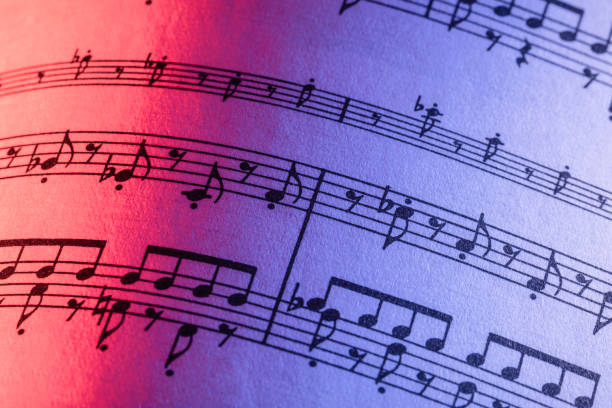
Engaging all five senses in music description
Engaging all five senses in music description is the gateway to a multi-dimensional sonic journey. Beyond the auditory realm, music possesses the extraordinary ability to evoke sensations that extend to touch, taste, sight, and even scent.
As the notes of a violin quiver, they can feel like a gentle caress against the skin; a rich symphony may taste like a decadent, bittersweet chocolate, and a vibrant melody can appear as a kaleidoscope of colors in the mind’s eye.
The resonance of a bass drum might reverberate in the chest like a thunderous heartbeat, while a delicate harp melody can conjure the sensation of delicate silk threads running through fingertips.
By embracing all the senses, music description transcends the confines of the auditory, painting a multi-sensory masterpiece that immerses the listener in an exquisite, otherworldly experience.
Analyzing Musical Elements
Analyzing musical elements is like peeling back the layers of a sonic universe, revealing the intricate gears and cogs that power the symphonic machinery.
It’s the detective work of deciphering the composer’s musical language, akin to reading between the lines of a captivating novel.
From the soul-stirring melodies that tug at heartstrings to the rhythmic cadence that ignites a primal dance within us, every note and nuance has a story to tell.
Harmony and dissonance play a dynamic tug-of-war, and tempo can be a masterful puppeteer, dictating the emotional rollercoaster of a composition.
It’s a journey through the spectrum of human emotion, where dynamics surge like ocean tides, and instrumentation weaves a tapestry of sound, as each instrument becomes a character in the grand narrative.
As we dissect these elements, we not only unlock the secrets of the music itself but also glimpse the essence of the human experience, making music analysis a voyage of endless wonder and discovery.
Describing the emotional impact of melodies
Describing the emotional impact of melodies is akin to translating the language of the heart into the realm of words. Melodies possess an extraordinary power to bypass the intellect and resonate directly with the soul.
They can be like a balm, soothing the wounds of a weary spirit, or a catalyst, igniting a fire of passion within.
Some melodies may evoke a sense of nostalgia, flooding the mind with memories of times long past, while others can evoke an indescribable yearning for something unattainable.
The emotional impact of melodies can range from the euphoric heights of joy to the profound depths of sorrow, touching upon the full spectrum of human sentiment.
In the world of music, melodies are the storytellers, and the emotions they convey are the vivid colors that paint the canvas of our innermost experiences, making the appreciation and description of these emotional impacts a truly transcendent endeavor.
Clarifying the concept of harmony
Clarifying the concept of harmony in music is like unveiling the intricate dance of celestial bodies in the night sky.
It’s the art of understanding how different musical notes interconnect and resonate with one another to create a sublime, unified whole.
Harmony is the harmonious marriage of sounds that adds depth, texture, and emotional resonance to a composition.
It’s the magic that turns individual voices and instruments into a choir of consonance, weaving a tapestry of chords that can soothe, excite, or stir the soul.
Just as in life, where harmonious relationships foster unity and beauty, in music, harmony is the force that binds melodies together, transforming what might be chaos into a symphonic masterpiece.
Clarifying the concept of harmony is to grasp the essence of this hidden language within music, unlocking the door to a world where different notes and voices blend together in a breathtaking, euphonic unity.
Understanding rhythmic patterns
Understanding rhythmic patterns in music is akin to decoding the heartbeat of a composition, the very pulse that drives its emotional resonance.
Rhythmic patterns are the invisible scaffolding upon which melodies and harmonies are woven, providing structure, momentum, and a unique sense of movement.
They are the conductor’s baton, dictating the tempo and guiding the listener through the musical narrative. From the hypnotic, toe-tapping rhythms of Latin percussion to the intricate, syncopated beats of jazz, each genre and piece carries its distinct rhythmic signature.
Recognizing these patterns is like learning a secret code, enabling the listener to predict, appreciate, and even anticipate the twists and turns of a musical journey.
In the realm of music, rhythmic patterns are the steady heartbeat of a living, breathing composition, and understanding them is to feel the very soul of the music itself.

Defining dynamic changes in music
Defining dynamic changes in music is to explore the breathtaking highs and lows, the rise and fall, and the ebb and flow of a musical voyage.
Dynamics are the expressive fluctuations in volume, intensity, and power that sculpt the emotional landscape of a composition.
They can be as gentle as a whisper, drawing the listener into a world of intimate reflection, or as powerful as a thunderclap, electrifying the senses with a surge of raw energy.
In the symphonic realm, dynamics are the artists’ brushstrokes on a sonic canvas, revealing the subtleties of emotion and drama.
The contrast between soft and loud, between tranquility and turmoil, is where the magic happens, making dynamic changes a fundamental tool for musicians to communicate their intentions and elicit profound emotional responses from their audience.
To define dynamic changes in music is to unlock the gateway to a world where silence and thunder coexist, where every crescendo and decrescendo holds the power to stir the soul and create a vivid, emotional landscape.
Highlighting the significance of different instruments
Highlighting the significance of different instruments in music is like celebrating the unique voices in a grand, multicultural orchestra of sound.
Each instrument is a character with its own distinct personality, capable of expressing a wide range of emotions and moods.
From the soaring, lyrical notes of a violin that can evoke profound nostalgia, to the bold, earthy resonance of a brass instrument that can command attention and authority, each instrument contributes its own color to the sonic palette.
The significance of different instruments lies in their ability to convey the essence of a musical composition, to shape its texture, and to transport the listener on a musical journey that transcends words.
Whether it’s the gentle caress of a flute, the robust roar of a piano, or the rhythmic punch of a drum, each instrument has a vital role to play, and understanding and appreciating this significance allows us to immerse ourselves in the intricate tapestry of musical artistry.
Describing Emotional Resonance
Describing emotional resonance is like capturing the intangible echoes of the human soul in words. It’s an exploration of the profound connections music forges within us, transcending the boundaries of language.
Emotional resonance is that subtle but powerful force that reaches deep into our hearts, evoking a symphony of feelings and memories.
It’s the warm embrace of a melancholy melody on a rainy day, the triumphant surge of a crescendo that ignites our spirits, and the delicate, bittersweet dance of notes that mirror the complexities of our own emotions.
In the world of music, emotional resonance is the universal language that binds humanity together, uniting us through shared experiences and feelings that words alone could never express.
It’s the emotional roadmap of a composition that weaves a story in our hearts , and to describe it is to unveil the hidden magic of music itself.

Recognizing the emotional content of music
Recognizing the emotional content of music is akin to deciphering the hidden messages whispered by the heart and soul of a composition.
Music, like a skilled orator, has the extraordinary power to convey a vast spectrum of human emotions. From the tender sorrow of a mournful violin to the jubilant exuberance of a triumphant trumpet, music is a language of feelings, unbound by words.
It’s a mirror that reflects the depths of human experience, offering a sanctuary for introspection, healing, and celebration.
Recognizing the emotional content of music is to embark on an empathetic journey, where the melodies and harmonies become the emotional palette of the soul, revealing not only what the composer intended but also what the listener seeks to find.
In this rich tapestry of sound, we find solace, understanding, and an ever-present companion for life’s most intimate moments, making the recognition of emotional content in music a truly profound and transformative experience.
Relating personal experiences and emotions to the music
Relating personal experiences and emotions to music is akin to forging an intimate connection with the very essence of a composition.
Music, as a universal language of emotions, serves as a conduit for our own stories, heartaches, and joys. It possesses the incredible ability to become a canvas upon which we paint our innermost feelings and experiences.
A poignant ballad might resonate with the ache of a lost love, while an uplifting symphony can mirror the elation of personal triumph.
We often find solace and empathy in lyrics or melodies that seem to speak directly to our souls, allowing us to heal, reflect, or simply revel in the emotions of the moment.
In this way, music becomes a mirror, a confidant, and a timeless companion that helps us make sense of our own emotional landscape, intertwining our personal narratives with the timeless tales told through notes and rhythms.

Incorporating Cultural and Historical Context
Incorporating cultural and historical context into our musical journey is akin to unearthing a hidden treasure chest of stories, traditions, and emotions.
Music is a profound reflection of the society and time from which it springs, and when we delve into its historical and cultural roots, we unearth a vibrant tapestry of human experiences.
Whether it’s the blues, born from the struggles of African Americans in the Deep South, or the intricate ragas of Indian classical music, steeped in centuries-old traditions, each note carries the weight of its heritage.
We become time travelers, transported to the Renaissance courts, the jazz clubs of the Harlem Renaissance, or the ancient temples of the East, all through the melodies that have been handed down through generations.
By incorporating cultural and historical context, we not only deepen our appreciation of music but also gain profound insights into the interconnectedness of the human experience, making each note a bridge between past and present, and between cultures far and wide.
Utilizing Music Analysis Tools
Utilizing music analysis tools is like arming ourselves with the spectacles of an audio detective, granting us X-ray vision into the very anatomy of sound.
These digital instruments of inquiry enable us to dissect compositions, uncover the hidden patterns, and decode the musical DNA within.
From spectral analysis that visualizes the harmonic spectra, to tempo mapping that unravels the intricate rhythmical intricacies, these tools are the key to unlocking the secrets of musical masterpieces.
It’s like having a sonic microscope, allowing us to zoom in on the nuances of each note, from the faintest pianissimo to the thunderous fortissimo.
Whether you’re a musician, a composer, or simply an avid listener, these tools are a backstage pass to the mesmerizing symphony of music, offering fresh perspectives and untold revelations within each carefully crafted score.
In a world where technology and artistry converge, music analysis tools are our compass through this mesmerizing soundscape, revealing layers and subtleties that even the keenest ear might miss.
Incorporating audio excerpts to enhance descriptions
Incorporating audio excerpts to enhance descriptions is like infusing a written narrative with the very heartbeat of the music itself.
It’s the alchemical fusion of words and sound, creating a multi-sensory experience that transcends the limitations of text.
When we weave audio samples into our descriptions, we grant the reader a front-row seat to the sonic journey, allowing them to not only visualize but also hear the very notes and rhythms we’re describing.
It’s an invitation for the audience to step into the world of the composition, to be bathed in its emotional resonance, and to feel the music as it unfolds.
Whether it’s the soulful wail of a blues guitar, the delicate serenade of a violin, or the thunderous crash of a rock drum solo, these audio excerpts bring the words to life, allowing the reader to fully immerse themselves in the magic of music, making the description an unforgettable and truly immersive experience.
Frequently Asked Questions (FAQ) about How To Describe Music In Writing
Why is describing music in writing important.
Describing music in writing is crucial because it allows you to convey the emotional and sensory aspects of music, making it accessible to a broader audience. It enhances the listening experience by offering context and interpretation, helping readers connect more deeply with the music.
What are the key elements to consider when describing music?
The key elements to consider when describing music include melody, harmony, rhythm, tempo, dynamics, instrumentation, and emotional resonance. These elements collectively shape the unique character and impact of a musical composition.
How can I effectively describe the emotional content of a piece of music?
To describe the emotional content of music, focus on the feelings and moods it evokes. Use descriptive language and metaphors to convey emotions, and share personal experiences or associations the music brings to mind.
Why is it important to incorporate cultural and historical context when describing music?
Incorporating cultural and historical context enriches music descriptions by providing insights into the origins, influences, and evolution of a musical piece. It helps readers appreciate the deeper meaning and significance of the music.
What tools can I use to analyze music for a more in-depth description?
Music analysis tools like spectrograms, tempo mapping software, and even notation software can aid in breaking down the various components of a musical piece. These tools provide a visual representation of the music’s structure and dynamics.
How can I engage all five senses in music description?
Engaging all five senses involves using descriptive language that appeals to sight, sound, touch, taste, and smell. Metaphors and vivid adjectives can help readers visualize and experience the music more fully.
Can you provide examples of effective music descriptions?
Certainly! Throughout our exploration, we will provide numerous examples and case studies that illustrate effective music descriptions, showcasing the diverse techniques and styles used by seasoned writers.
How can I receive feedback on my music descriptions to improve my skills?
Seeking feedback from peers, instructors, or participating in writing communities and workshops is an excellent way to refine your music description skills. Constructive criticism can help you hone your writing and better connect with your audience.
What’s the best way to get started with describing music in writing if I’m a beginner?
Start by listening to various types of music and practice writing your impressions and emotions evoked by each piece. Experiment with different techniques, read other music descriptions, and don’t be afraid to be creative in your approach.
How can I use technology to enhance my music descriptions?
You can incorporate audio excerpts, utilize music analysis software, and explore multimedia platforms to create immersive music descriptions. Technology offers powerful tools for capturing the essence of music in your writing .
In conclusion of How To Describe Music In Writing, the art of describing music in writing is a captivating journey that transcends the boundaries of sound and language, opening doors to the boundless realms of human emotion and creativity.
Through this exploration, we’ve uncovered the tools and techniques to articulate the intricate beauty of music, translating it into words that can touch the hearts and minds of readers and listeners alike.
Music, in its many forms and styles, becomes a living, breathing entity when brought to life through the art of description.
Whether you’re a musician, a writer, or a passionate music enthusiast, this endeavor offers a profound opportunity to deepen your connection with the world of sound, to unveil its stories and secrets, and to share the magic of music with the world in a way that resonates far beyond the realm of notes and melodies.
So, whether you’re aiming to craft vivid symphonic narratives or simply to better understand the music that moves your soul, the journey of describing music in writing is a boundless and endlessly rewarding pursuit.
Related Posts:
How to write country music for beginners 2024.
- Negative Ghost Rider (Meaning, Origin & Usage)
- How To Describe Summer Season In Writing (08 Best Steps)
- How To Describe A Wedding In A Story (10 Best Ways)
- How To Describe Rain In Writing (In A Poetic Way- 2024)
- Anime Writing Secrets (12 Steps You Need To Know)
Similar Posts

Comic Book Ideas (Complete Guide For Beginners- 2024)
Comic Book Ideas Introduction Comic books have been a popular storytelling medium for many years due to their unique blend of narrative and visual art. The process of coming up with a solid comic book idea is exciting and challenging, no matter your level of experience as a comic or graphic novelist. Why are comics…

How To Describe Fight Scenes In Writing (14 Best Tips)
How To Describe Fight Scenes In Writing How To Describe Fight Scenes In Writing: Describing fight scenes in writing is an art form that transcends the mere clash of swords or fists; it is the alchemical fusion of words that can electrify the imagination and captivate the reader’s senses. Whether it’s the heart-pounding duel of…

How To Write Enemies To Lovers (10 Top Tips)
How To Write Enemies To Lovers How To Write Enemies To Lovers: Embarking on the captivating journey of crafting an Enemies to Lovers narrative is akin to wielding a literary alchemy, where the sparks of discord metamorphose into the flames of passion. This genre, rich with tension, emotional depth, and unexpected transformations, has the power…
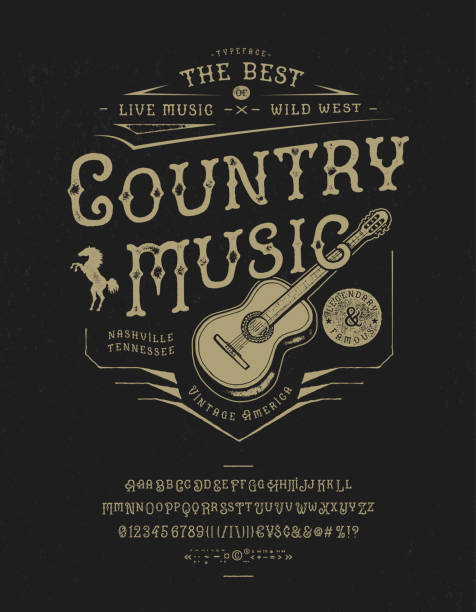
How To Write Country Music How To Write Country Music: In the soulful depths of country music lies a rich tapestry of storytelling, melody, and emotion that has captured the hearts of listeners for generations. It’s a genre steeped in tradition yet constantly evolving, where the timeless themes of love, loss, and the rugged beauty…

How To Describe Night In Writing (For Beginners- 2024)
How To Describe Night In Writing How To Describe Night In Writing: In the realm of storytelling, the night is a canvas painted with shades of mystery, romance, and introspection. Capturing the essence of the nocturnal world through the art of description is a literary endeavor that transcends mere depiction; it is an invitation for…
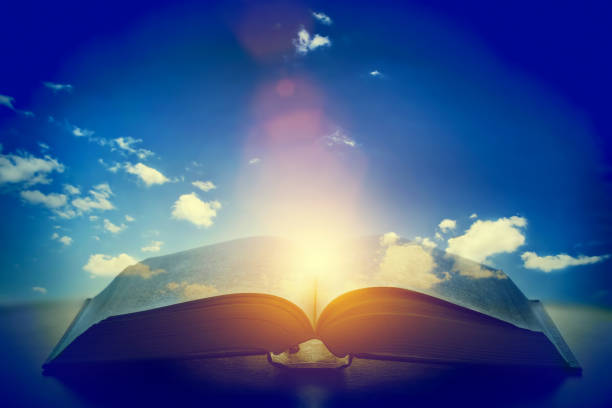
How To Describe Heaven In A Story (10 Best Tips You Need To Know)
Describing Heaven in a story invites readers to step through the veil of the mundane, into a realm where the fabric of reality weaves patterns of breathtaking beauty and profound peace. This task demands more than a mere depiction of scenery; it requires the conjuring of a sensory and spiritual experience that transcends the limits…

How to Describe Melody in Writing [100 Examples]
Writing about melody can transform a simple narrative into a symphonic masterpiece. Here’s how you can master this skill.
What Is Melody in Writing?

Table of Contents
Melody in writing refers to the lyrical, rhythmic quality that gives text a musical tone.
It’s not just about sound but also about the flow and harmony of words, creating an auditory experience in the reader’s mind.
This concept enhances the emotive power and memorability of prose or poetry, akin to a catchy tune that lingers long after the song is over.
Types of Melodies in Writing
Melodies in writing vary widely, each bringing a unique rhythm and feel to the text.
Here’s a simple chart to illustrate some common types:
- Linear melodies create a calm, flowing narrative.
- Jagged melodies often convey tension or conflict.
- Repetitive patterns help establish rhythm and emphasize themes.
- Ascending melodies can build suspense or lead to a climax.
- Descending melodies might be used to signal a resolution or denouement.
10 Tips to Describe Melody in Writing
In this section, I will share tips gleaned from over two decades of writing and publishing.
You don’t need to master them all at once. Give yourself time and space to grow into the tips and techniques that speak to you the most.
Tip 1: Use Sensory Words
To effectively convey melody in writing, incorporate sensory words that evoke sounds.
Examples include whispering, booming, echoing, and murmuring . These words help readers hear the music through your prose.
- The leaves murmured in the breeze.
- Echoing footsteps haunted the empty hall.
- Raindrops boomed on the old tin roof.
- Voices whispering secrets through the dark.
- The wind howled its eerie tune.
- Clocks ticked in a synchronous melody.
- Guitars strummed at a soft, steady rhythm.
- The stream’s gentle babble calmed her nerves.
- Birds chirped melodiously at dawn.
- Bells tolled in the distant church.
Tip 2: Play with Sentence Length
Varying sentence length can mimic musical rhythms in your writing.
Short sentences can create staccato beats, while longer ones may form smoother melodies.
- He ran. Fast. Hard.
- She could hear the continuous, soothing melody of his voice, calming her restless spirit.
- Stop. Listen. The night breathes.
- Under the moonlight, the river flowed silently, weaving through the night with a soft, tranquil song.
- Bang! The door slammed shut.
- In the quiet morning, the long, melodic chirping of the early birds filled the air, signaling the start of a new day.
- Tick. Tock. The clock counted the moments.
- Laughter bubbled over, a light, joyful tune in the air.
- Sirens wailed, a piercing cry in the dusk.
- She spoke in paragraphs, her words flowing like a gentle stream.
Tip 3: Incorporate Literary Devices
Literary devices like alliteration, assonance, and onomatopoeia can enhance the melody of your writing by creating sound patterns that appeal to the ear.
- The whispering winds were weary.
- Silly Sally swiftly shooed seven silly sheep.
- The tinkling teacups took to talking.
- Bubbles burst at the baby’s babbling.
- The clangor of the city clashed with the calm countryside.
- Peter Piper picked a peck of pickled peppers.
- The luscious lemon loaves left us longing.
- She sells sea shells by the seashore.
- The mellow melody moved through the meadow.
- Clinking coins counted cold cash.
Tip 4: Reflect the Mood with Rhythm
The rhythm of your sentences can reflect the mood you want to convey.
Fast rhythms can evoke excitement or urgency, while slow rhythms might express calmness or sadness.
- Heart racing, breath quickening—she couldn’t wait.
- The days dragged, dreary and damp.
- Quick, quick, slow—dance the night away.
- Her heart sank with each slow, somber toll of the bell.
- Race against time, the clock ticking loudly.
- A slow saunter through the silent streets.
- Leap and hop, skip and jump, the children played.
- Every slow second stretched longer than the last.
- Pulsing, throbbing, beating fast—the sound of excitement.
- A gradual gust, then a swift storm, suddenly silent.
Tip 5: Emphasize Tone through Word Choice
The choice of words can significantly influence the melody of your writing. Opt for words that carry the tone you aim to establish, whether it’s joyful, somber, tense, or relaxing.
- Joy erupted in the room like a delightful symphony.
- Shadows crept silently, spreading a shroud of gloom.
- Tension twisted the air, tight as a taut string.
- Relaxing riverside ripples resonated with a refreshing rhythm.
- Laughter lifted the spirits, light and lilting.
- Sorrow sank softly into the silent spaces.
- Excitement echoed everywhere, electric and energizing.
- Calm caressed the countryside, a soft serenade.
- Fear flickered faintly in the fast, fleeting footsteps.
- Peace pervaded, a placid, perfect pause.
Tip 6: Use Metaphors and Similes
Metaphors and similes draw direct comparisons to sounds or musical qualities, making the description of melody more vivid and relatable.
- Her laughter was like a melody, light and uplifting.
- His voice was a rough symphony, harsh yet compelling.
- The argument struck a chord, dissonant and jarring.
- Silence settled like a thick blanket, smothering all noise.
- The news resonated like a gong, loud and clear.
- Their conversation flowed like a smooth jazz piece.
- The cry of the wind was a sad song through the trees.
- Her words were a gentle lullaby, soothing and soft.
- The party buzzed like a lively orchestra.
- His mood was a dark cloud, muting the usual melodies around him.
Tip 7: Integrate Repetition for Rhythmic Effect
Repetition of words, phrases, or structures can mimic the repetitive nature of a musical refrain or chorus, reinforcing the melodic quality of your writing.
- She was happy, truly happy, at last.
- No, no, no! He couldn’t believe it.
- Rain, rain, go away. Come again another day.
- Forever and ever, eternally bound.
- He walked and walked, nowhere in mind, just walking.
- What a day, what a dreadful day!
- Yes, yes, all was well.
- Home at last, home at last, thank God Almighty, home at last.
- Stop, stop, she wanted to scream.
- Love, love changes everything.
Tip 8: Align Syntax to Musical Structure
Mimic musical structures in your sentence constructions to evoke specific types of melodies. Think of how a composer arranges notes and try to reflect that in your syntax.
- Just as a crescendo builds, so did her anticipation.
- A pause—silent but poignant—as the truth sank in.
- A rapid succession of events, like notes in a fast-paced tune.
- Her thoughts meandered like a leisurely sonata.
- Sharp, short sentences. Like staccato. Piercing.
- A slow unfolding, like a minuet, graceful and deliberate.
- Each paragraph ended with a refrain, echoing the last.
- Questions rose, one after another, a curious melody.
- A climax of conflict, then a resolution, smooth and satisfying.
- The dialogue wove like a duet, back and forth, beautifully synchronized.
It helps to fully understand musical structure, so here is a good video to help you:
Tip 9: Draw on Natural Sounds
Nature is full of melodies, from bird calls to the rustling of leaves. Describe these natural sounds to enhance the melodic elements in your writing.
- Birds chirping at dawn, a natural symphony.
- Wind whistling through the trees, a haunting tune.
- Waves crashing on the shore, a rhythmic beat.
- Rain tapping on the window, a steady percussion.
- Leaves rustling, a soft, whispering chorus.
- Thunder rumbling, a powerful bass in the storm’s song.
- A stream’s gentle gurgle, a continuous melody.
- Frogs croaking at night, an unexpected choir.
- Crickets chirping, the soundtrack of a summer night.
- Snow falling silently, a quiet, unplayed symphony.
Tip 10: Reflect Characters’ Emotions through Melodic Descriptions
Use the concept of melody to mirror the emotional states of characters, making their feelings resonate more deeply with the reader.
- Her joy sang through the room, infectious and bright.
- His anger was a harsh, clashing cymbal.
- Her sadness resonated like a slow, minor key melody.
- Excitement buzzed through him, a lively tempo.
- His confusion swirled like a dissonant chord, unresolved and tense.
- Her fear echoed like a sharp, staccato note in the dark.
- His determination resonated with the steady beat of a drum.
- Her love was a tender ballad, sweet and soft.
- His loneliness was a solo flute, playing a melancholic tune.
- Her relief washed over like a resolving note, completing the melody.
50 Best Words to Describe Melody
When describing melody in writing, choosing the right words is crucial.
Here are 50 of the best words to convey different aspects of melody:
- Melancholic
- Cacophonous
50 Best Phrases to Describe Melody
Phrases can also capture the essence of melody in more detail.
Here are 50 phrases to help describe various melodic qualities:
- Like a choir of angels
- As if a symphony filled the air
- Echoes of a forgotten song
- A tune that dances lightly
- Whispers of a hidden melody
- Roaring like a tempest
- Soft as a lullaby
- A rhythm that races the heart
- Clashing cymbals of emotion
- A melody that weaves through the consciousness
- Harmonies that hug the heart
- Dissonant notes clanging
- A cascade of sound
- A melody that tugs at the soul
- Syncopated beats of urban life
- A symphony of sorrow
- Jubilant tunes lifting spirits
- A serenade of soothing sounds
- Piercing the silence with its sharpness
- Melancholic strains lingering
- Vibrant echoes bouncing off walls
- The monotony of a drone
- Lyrical whispers of the wind
- A raucous racket reverberating
- The serene sound of water flowing
- A sombre tune that mutes the mood
- Resonant echoes from the past
- Shrill cries piercing the air
- Dulcet tones soothing the senses
- A chaotic cacophony of sounds
- Soothing the soul with soft harmonies
- Jarring jolts of unexpected noise
- Euphonious echoes enchanting the ear
- Strident sounds striking sharply
- Gentle whispers of the night
- A bellowing boom breaking the calm
- The intimate whisper of the breeze
- Thunderous roars of raging storms
- Staccato steps on a cobbled street
- Legato lines of a love song
- Dissonant din of the busy city
- Tonal transitions telling a tale
- Atonal abstracts artfully arranged
- Melodic murmurs moving through the mist
- Cadenced chords climbing crescendo
- Faltering frequencies fading away
- Steady streams of sonic sensation
- Hectic harmonies hustling and bustling
- Flowing freely like a river
- Screeching stops startling the stillness
3 Full Paragraph Examples of Describing Melody in Writing
Here are three full paragraphs showing you examples of how to describe melody in writing.
Example 1: A Morning in Spring
As dawn broke, the melody of the morning began softly, with the gentle twitter of robins and the distant coo of doves.
The air was filled with the sweet whispers of spring, each breeze carrying a new note. From the rustling of fresh leaves to the soft buzz of bees, the symphony of nature played a vibrant, renewing tune, symbolizing new beginnings and the joy of life’s continual renewal.
The chorus grew as the sun climbed higher, adding layers of warmth to the melody, each ray casting light not just upon the land but also within the hearts of all who listened.
Example 2: An Evening by the Fireplace
The crackling of the fire set the evening’s melody, a comforting, steady pop and hiss that spoke of warmth and safety.
Around it, the softer, underlying tones of the house added depth to the composition: the distant clink of dishes being set, the low murmur of voices sharing stories, and the occasional soft padding of feet on the wooden floor. This domestic symphony, rich with familiarity and love, wrapped its listeners in a blanket of peaceful contentment, making the world outside seem far away and unimportant.
Example 3: A Stormy Night
The melody of the storm was anything but gentle.
It began with the ominous rumble of thunder, a deep bass that vibrated through the air and ground alike. Then, the wind joined in, a howling tenor that swept around corners and rattled windows. Rain provided the percussion, pounding on the roof in a relentless tempo.
Together, these elements performed a powerful and exhilarating symphony of nature’s raw energy, each gust and clap a reminder of the wild dance going on outside, thrilling and a bit terrifying.
Final Thoughts: How to Describe Melody in Writing
There are, of course, many ways to talk about melody in writing.
This is but one (or ten). There is also tone, humor, and specific genres of writing and songwriting.
Read This Next:
- How to Describe Tone in Writing (300 Examples)
- Writing Music: 100 Best Songs to Spark Your Creativity
- 11 Best Pens for Writing [Ultimate Guide for Writers]
- How to Write a Funny Country Song (40 Best Steps)
- How To Write Country Music (21 Steps to Writing a Hit)

COMMENTS
Describe music in writing by focusing on elements like rhythm, melody, harmony, dynamics, timbre, texture, form, tempo, mood, instrumentation, lyrics, and context. Use vivid words and phrases to convey the emotional and sensory experience of the music.
How to Describe Music in Writing. Music, much like other sensory elements in a story, will be most effective if its presence serves multiple purposes to the scene or chapter. Consider the following ways music can add layers to …
Describing music in writing is crucial because it allows you to convey the emotional and sensory aspects of music, making it accessible to a broader audience. It enhances the listening experience by offering context and …
Music can give background to the scenes, follow them - describe its changes of the beat to reflect the effects. It can guide, influence the characters. It may hint, explain, or …
To effectively convey melody in writing, incorporate sensory words that evoke sounds. Examples include whispering, booming, echoing, and murmuring. These words help readers hear the music through your prose. The leaves …
Describe in broad terms the topic and style of the song but keep the narrative focus on how it effects the characters. You can also use this method if you are struggling to write a song with …